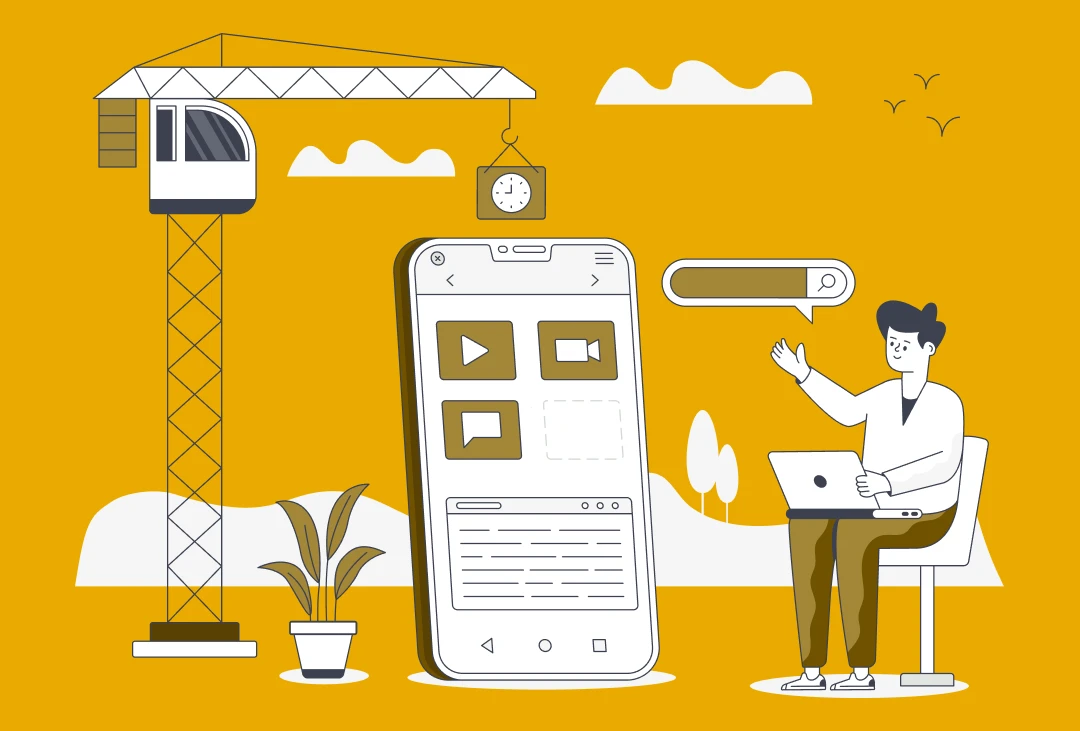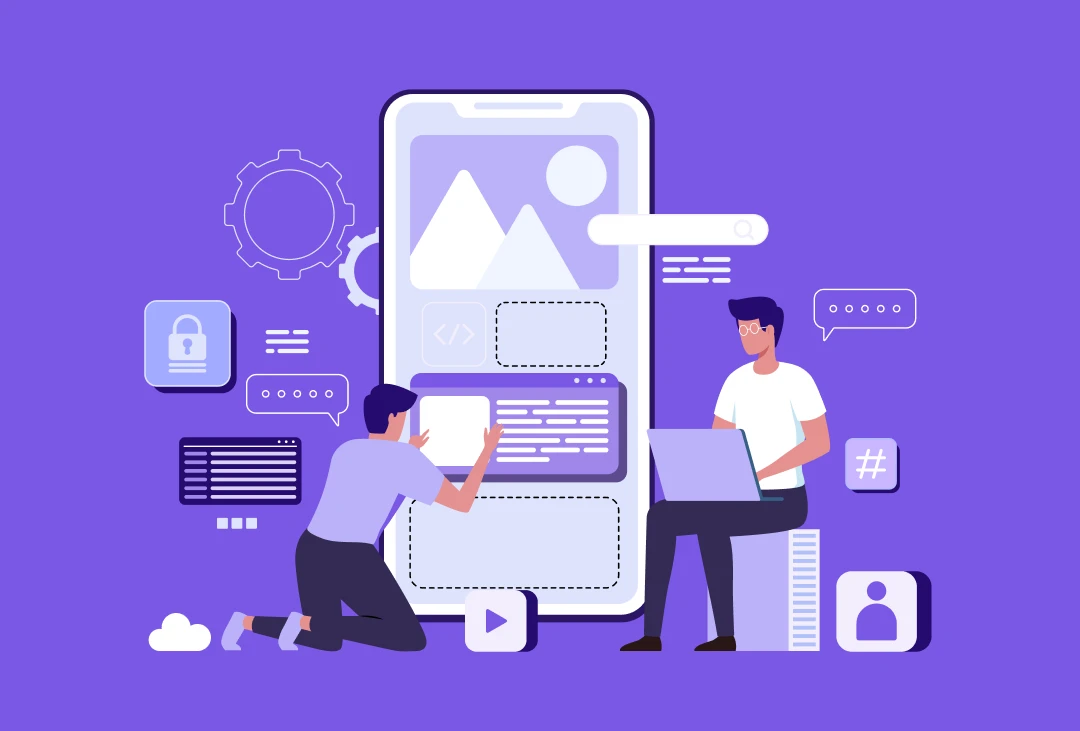- Auto insurance market growth statistics
- Top players active in the auto insurance mobile apps market
- Factors that influence the cost of auto-insurance app development
- 1. Platform
- 2. Team type
- 3. Team location
- 4. Features and functionality
- Must-have features to include in your auto insurance app
- 1. Vehicle information
- 2. Push notification
- 3. Documentation
- 4. Geolocation
- 5. Filters
- 6. Policy review
- 7. Customer support
- Tech stack of auto insurance mobile application like State Farm
- Final cost to develop automobile insurance app
- State Farm-like auto insurance mobile application revenue model
- 1. Interest income
- 2. Service fees
- 3. Commission
- FAQs
As you read this line, someone in the world is becoming a victim of a road accident.
Every second, a mishap happens on the road. Various vehicles turn into trash and their drivers get heavily injured. This scenario has not just made it imperative for vehicle owners to follow traffic rules religiously, but also keep their vehicles insured.
But considering the wide range of insurance companies available in the marketplace, it has become a hectic task for users to pick one. This has brought the need for a platform that connects users with multiple insurance companies and choose the optimal one. Something that is making auto insurance mobile apps like State Farm gain a huge momentum in the industry.
But how much does a State Farm-like auto insurance app development cost? To provide you with a rough estimate, the cost to develop an auto insurance app like State Farm can range between $45,000 and $60,000, depending on various factors.
In this blog post, we’ll take a look at all those factors and provide a few ballpark estimates that lead to the final cost.
But before that, let’s take a quick look at the car insurance statistics, hinting at why it is the right time for you to tap into the business.
Auto insurance market growth statistics
Numerous statistics suggest that the car insurance sector is currently in a state of growth, with plenty of opportunities for new players to enter the vehicle insurance market. Some of the key statistics that highlight this opportunity include:

Now that we’ve looked at the key statistics highlighting the market growth, let’s also take a quick look at the top players you will be sharing the space with.
Top players active in the auto insurance mobile apps market

These apps operate in different parts of the world, have different target user bases, and work around different marketing strategies. But, one thing that is found common among all is the factors that affect the final cost of car insurance apps.
Factors that influence the cost of auto-insurance app development
Automobile insurance app development costs are majorly impacted by the platform, team type, team location, and the features and tech stack used. Let’s take a deeper look at each of these factors individually.

1. Platform
One of the key factors that influence the cost of automobile insurance app development is the platform that you choose to develop your app on. There are different platforms that you can choose from, including iOS, and Android. Each platform has its own set of features and benefits, and your app development budget will vary depending on the platform that you choose.
2. Team type
The type of team you choose to develop your app will have a big impact on the pricing. If you choose to hire an in-house team, it will likely cost more than if you outsource the development to a third-party company. This is because in-house teams tend to be more expensive, as they require a lot of overhead, whereas outsourcing a company that offers insurance and other fintech software development services can be more cost-effective.
| Type of team, US | Approximate cost |
|---|---|
| Inhouse team | $1,50,000 |
| Outsource company | $60,000 |
3. Team location
Another factor is the location of the team that you choose to develop your app. If you choose to outsource the development in the United States or the UK, it will likely cost more than if you outsource the services to a team in Asia. This is because the cost of living and wages are significantly higher in the United States than in other nations.
| Team location | Approximate cost |
|---|---|
| US | $180,000 |
| Europe | $120,000 |
| Australia | $170,000 |
| Asia | $50,000 |
4. Features and functionality
Another factor that greatly influences the cost of an auto insurance app is the features that you choose to include in your app. The more features you include, like payment gateway, chatbot, etc, the more expensive it will be to develop your app. Therefore, it is important to carefully consider the features that you want to include in your car insurance business app before you start the development process.
Must-have features to include in your auto insurance app
Now, while we have discussed how deeply the features of an auto insurance app affect the final costing, let us take a look at the list of must-have features for your State Farm-like mobile application.

1. Vehicle information
Vehicle information is the first and foremost feature to consider in your Android or iOS mobile insurance app development process
The feature lets users feed their vehicle details and find the relevant purchasing insurance. It helps cut down their efforts and enhances the service quality.
2. Push notification
Push Notification is also one of the must-have features of automobile insurance apps. On one side it reminds users of the insurance renewal dates, and on the other side, it aids insurance companies in marketing their services better.
Now, when you are talking about gaining huge conversions via a push notification app marketing strategy, it is good to build the best push notification strategy.
3. Documentation
Another feature to consider when focusing on how to create an auto insurance app is documentation. The feature allows app users the option to upload images of documents. This not just streamlines the whole process but also cuts down user’s hassle to stand in long queues for registering car insurance documents.
Bonus Read- Telematics Insurance: The Next Technology Frontier For Your Business
4. Geolocation
Geolocation is also an essential feature to focus on during car insurance app development. This feature enables drivers and insurance companies in real-time tracking of vehicles and geo-based marketing opportunities. Especially when the hired mobile app development company has followed the best guide on adding geolocation in mobile apps.
5. Filters
Not every user has the same needs and expectations when it comes to choosing an insurance package. So, it can be beneficial to add a filter option that enables them to customize the list as per their wish.
6. Policy review
This is yet another must-have functionality to consider in an auto insurance app. It aids users with an option to check for all the details related to any policy. This includes policy number, type, effective and expiration date, and the set of vehicles it is applicable for.
7. Customer support
After witnessing the growing competition in the auto insurance market, adding a customer support option in your app is a great idea.The feature enables users to ask their queries from the insurance companies and get relevant solutions in real-time. This eventually builds better business relationships between the two.
It’s true that these features magnetize users to the auto insurance mobile application. However, they are not the driving factors. These features are backed by some mobile apps technology stack that add life to them.
So, let’s have a glance at the tech stack before heading to the auto insurance app cost estimate section.
Tech stack of auto insurance mobile application like State Farm
![]()
With this covered, let’s get a final estimate of the cost of auto insurance app development.
[Also Read: AI in insurance – How is artificial intelligence impacting the insurance sector?]
Final cost to develop automobile insurance app
As mentioned above, the final State Farm-like auto insurance app development cost typically ranges between $45,000 and $60,000. However, the cost can rise even more if you choose to add more features and functionalities to the app.
To keep the cost of your auto insurance app development under check, it is crucial to embrace the idea of MVP development.
A minimum viable product (MVP) is a basic version of the mobile app that is made live with the essential features that best represent the application. The MVP development process helps in verifying the application’s feasibility and usability in the market by gathering early end-user feedback.
Adding a wide range of features can raise the cost of app development, it would make more business sense to embrace the idea of MVP development.
In case you are focusing on all the aforementioned features or factors for native app development, the development of auto insurance costs would range somewhere between $47,600 and $59,500.
Now that we know about the final cost of car insurance app development, let’s know various ways to keep the cost down.
Now, while you know the approximate cost to develop an auto insurance app, let’s move forward to also understand the revenue model of a State Farm-like app to earn the invested money back.
State Farm-like auto insurance mobile application revenue model
When it comes to getting an answer on how you can earn money from an app like State Farm, there are various methods you can apply. This includes:
1. Interest income
The primitive method to earn money from an auto insurance mobile application is the interest made on the claimed value during a specific time.
2. Service fees
You can also make money by charging users and insurance companies a service fee for using your platform’s functionalities.
3. Commission
Another method of making money from the State Farm-like application is to ask for a commission fee from the car insurance startup companies and well-established ones as per the sale of insurance policies that have been made from the mobile platform.
FAQs
Q. How much does insurance app development cost?
A. The cost to build an auto insurance app depends majorly on the features you introduce in your application and the tech stacks they are backed with. So, it is better to consult a mobile app development company to get an accurate estimate.
Q. How much does it cost to develop an on-demand insurance app?
A. If you are looking to develop an on-demand insurance app, then you can expect to pay between $30,000 and $300,000, depending on various factors. Head on to the article, how much does on-demand insurance app development costs to understand the various factors that impact the final cost.
Q. How long does it take to build an auto-insurance app?
A. Again, the answer to this question will depend on a number of factors, such as the features that you include in your app and the insurance software development company that you hire. However, the MVP version of an auto-insurance app typically takes 4 to 8 months to develop.



How Much Does It Cost to Build a Crypto Exchange App Like BitOasis in the UAE?
Key takeaways: The cost to build a crypto exchange app in the UAE ranges from $50,000 to $200,000. UAE regulations (VARA and Central Bank) impact development costs due to compliance needs. Advanced features like AI fraud detection increase development costs. The UAE crypto market is expected to grow significantly, offering huge potential. MVP and cross-platform…

How Much Does It Cost to Build An App Like Kayo Sports in Australia?
Key takeaways: Wide Cost Range: Developing a Kayo Sports-like app in Australia can cost between AUD 45,000 (MVP) and over AUD 750,000 for a full-featured, scalable platform. Feature Complexity Impacts Budget: High-end features, such as multi-view streaming, AI personalization, and multi-device support, significantly increase development costs. Ongoing Hidden Costs: Content licensing, cloud infrastructure, compliance, and…

How Much Does It Cost To Build An App in Singapore?
Key takeaways: Mobile app development costs in Singapore range from SGD 40,000 to over SGD 530,000, depending on complexity, platform, and features. Basic apps start at: SGD 40,000. High-end apps using advanced technologies like AI or blockchain can exceed SGD 530,000. Key factors such as platform selection (iOS, Android, Cross-Platform), app complexity (basic, medium, high),…

















